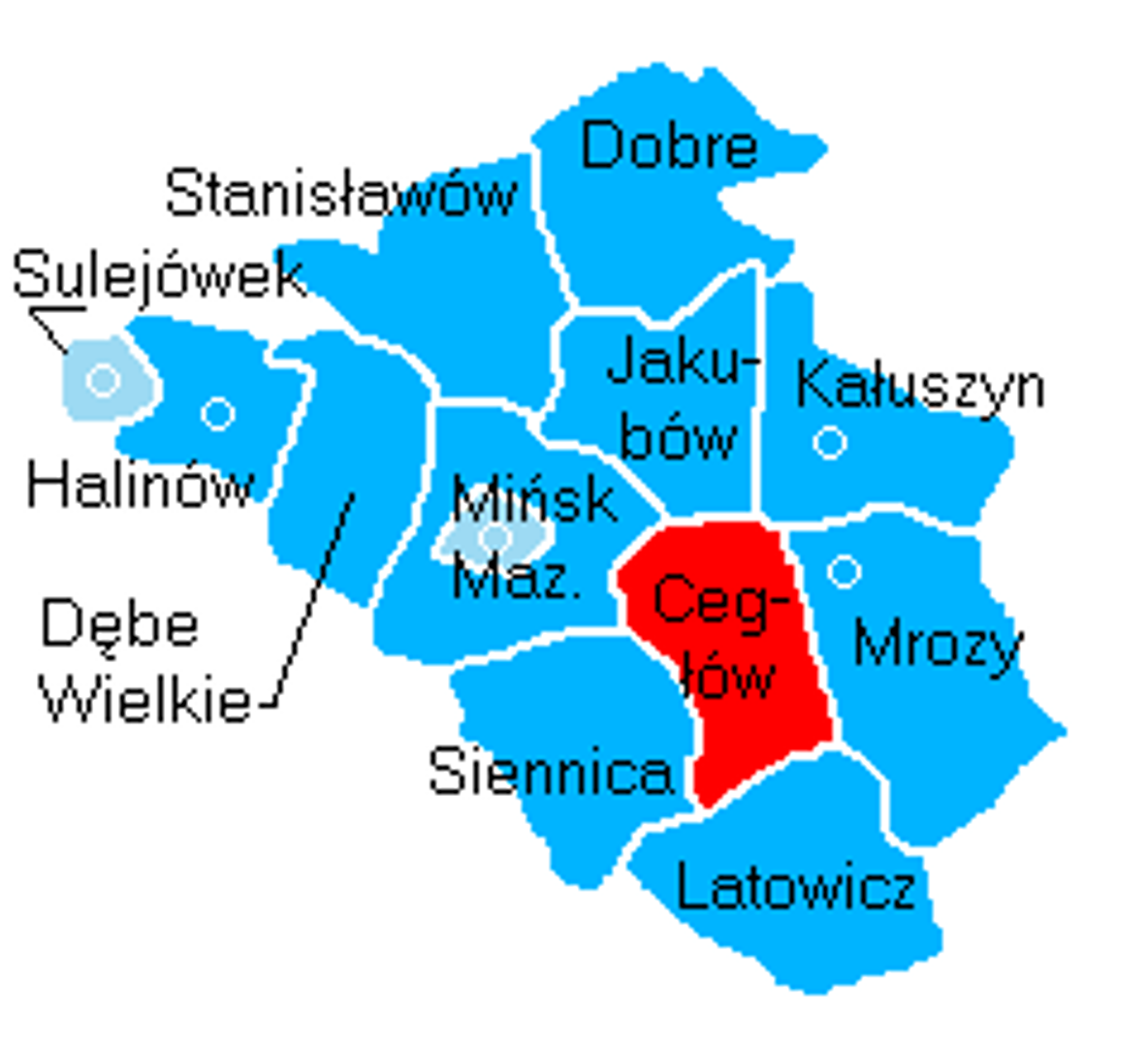Cegłów
6.39

Overview
Cegłów, formerly known as the Mienia Commune, is an urban-rural municipality in the Masovian Voivodeship, within the Mińsk County, with its administrative seat located in Cegłów. The history of the area dates back to prehistoric times, as evidenced by archaeological finds from the region, some of which are housed in the Archaeological Museum in Warsaw. Cegłów boasts a rich history; it was a town between 1621 and 1869, having received town rights from Sigismund III Vasa, and lost this status after the January Uprising. In 2022, Cegłów regained its town status. The name of the locality is most likely associated with the developed production of bricks and pottery. The municipality lies in the southern part of the Kałuszyn Upland, characterized by a denuded, flat terrain with the river valleys of the Mienia, Piaseczna, and Sienniczka. Within the municipality is the Jedlina Nature Reserve, established to protect a multi-species forest with a significant presence of fir trees. Over half of the municipality's area is covered by the Mińsk Protected Landscape Area, and there are also 12 natural monuments. The total area of the municipality is 95.74 km², of which 59% is agricultural land and 35% is forested, making it a significant area within the county. In 2022, the municipality had a population of 6,089, and its demographics indicate a diverse age structure. Cegłów is divided into several village districts (sołectwa), including Cegłów, Mienia, Piaseczno, and Wola Stanisławowska. Surrounding the municipality are other localities such as Jakubów, Kałuszyn, and Mińsk Mazowiecki. The municipality combines a rich history, interesting natural features, and both agricultural and tourism potential.
Location
You can also find here:
2025 Wizytor | All Rights Reserved
